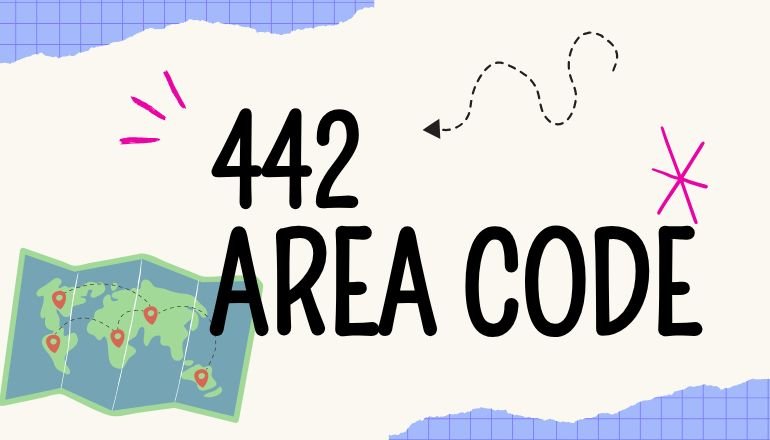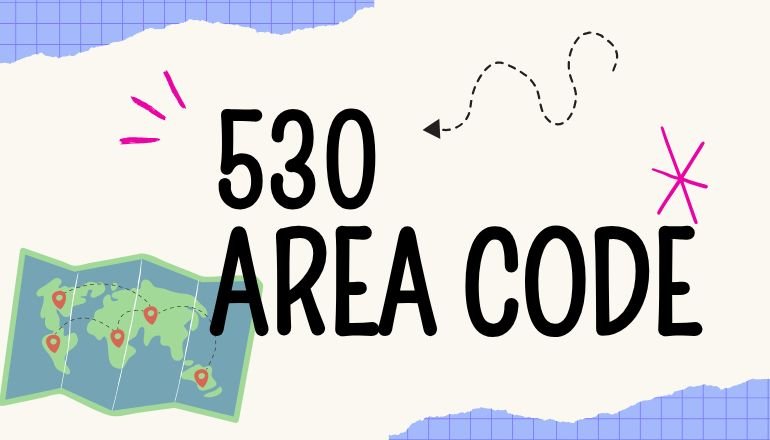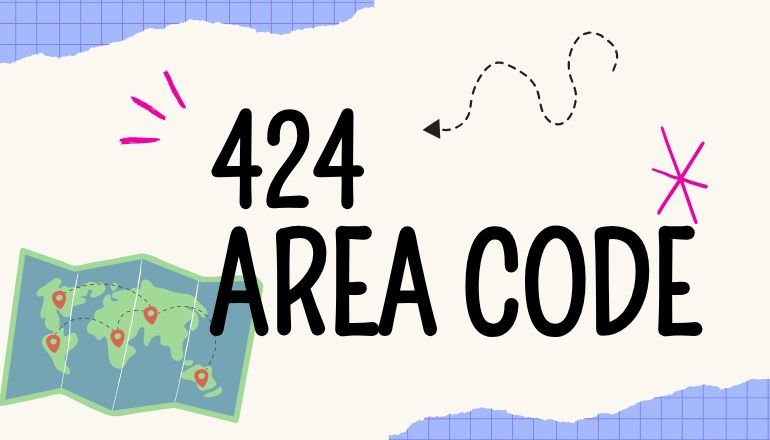Area codes are essential to modern communication systems, serving as the gateway to local regions and helping connect people across cities, states, and countries. In the United States, the number of area codes has steadily increased over the years due to the rising demand for phone numbers—driven by the growth of both mobile devices and landline use. One such area code, the 442 area code, plays a crucial role in facilitating communication within the vibrant region of Southern California.
The 442 area code covers an expansive and diverse geographic area, extending over parts of San Diego County, the Inland Empire, and the High Desert. Since its introduction, the 442 area code has been pivotal in meeting the demand for new phone numbers in these growing communities. With Southern California being one of the most populous and economically significant regions in the United States, understanding the area code’s implications is vital for businesses, residents, and anyone looking to stay connected in this part of the country.
This article provides a comprehensive look at the 442 area code, covering everything from its history and location to dialing procedures, safety concerns, and tips for verifying the legitimacy of 442 numbers. Whether you’re a local resident or someone trying to reach businesses in the area, this guide will provide all the essential details about the 442 area code.
What Is the 442 Area Code?
The 442 area code is part of the North American Numbering Plan (NANP) and serves multiple regions in Southern California, including San Diego County, Inland Empire, and parts of the High Desert. Introduced as an overlay to the 760 area code, the 442 area code ensures that communities within these regions continue to have access to phone numbers, supporting both landline and mobile phone services.
Southern California has been growing rapidly for decades, with cities and towns experiencing increased demand for residential housing, businesses, and telecommunications services. To address this demand and provide sufficient phone numbers, the 442 area code was created to complement the already existing 760 area code, ensuring that the region could handle the influx of new residents, businesses, and technological advancements.
History of the 442 Area Code
The 442 area code was introduced on November 21, 2009, as an overlay to the existing 760 area code. An overlay allows new numbers to be assigned a different area code without requiring existing numbers to change. This method prevents the disruption of existing phone services while accommodating the need for additional numbers. The 442 area code was created in response to the rapid population growth in Southern California, which had exhausted available phone numbers under the 760 area code.
Since its inception, the 442 area code has helped manage the booming telecommunications needs of Southern California, allowing new businesses and residents in regions like Palm Springs, Victorville, and Carlsbad to acquire new phone numbers without affecting existing services.
Geographic Coverage of Area Code 442
The 442 area code serves a vast and diverse range of regions within Southern California, including urban, suburban, and rural areas. Some of the key cities and areas under the 442 area code include:
- Palm Springs
- Victorville
- Carlsbad
- Escondido
- Oceanside
- Apple Valley
- Barstow
These areas are known for their unique mix of industries, from tourism and hospitality in Palm Springs to logistics and distribution in Victorville. The 442 area code is essential for connecting these varied communities and enabling seamless communication across the region.
How to Dial a 442 Phone Number
Dialing a phone number with the 442 area code follows the same process as other numbers under the North American Numbering Plan (NANP). Here’s a step-by-step guide for dialing both local and international calls to a 442 number:
Step 1: Initiate with the International Access Code (For International Calls)
If you are calling a 442 number from outside the United States, you will need to start with the appropriate international access code for your country. For example, the access code for the United Kingdom is 00, while for Australia, it’s 0011.
Step 2: Enter the Country Code
After the international access code, dial the country code for the United States, which is +1.
Step 3: Include the Area Code
Next, input the 442 area code.
Step 4: Dial the Remaining Digits
Finally, dial the seven-digit local phone number (XXX-XXXX). For example, if you’re dialing 555-1234, the full sequence would be +1 442 555 1234.
For domestic calls within the United States, simply dial 1, followed by the 442 area code and the seven-digit phone number.
What Makes the 442 Area Code Unique?
The 442 area code stands out due to its large and diverse coverage area, which includes parts of Southern California’s desert, coastal areas, and inland regions. Its broad geographic span makes it critical for businesses and residents in various industries, from tourism and agriculture to military operations and tech startups.
Moreover, because it was introduced as an overlay to the 760 area code, the 442 area code ensures that existing 760 phone numbers can remain the same while still providing new numbers for growing populations.
442 and 760 Area Code Overlay
The 442 area code was created as an overlay to the existing 760 area code. This means that both area codes cover the same geographic region, and new phone numbers may be assigned either a 442 or a 760 area code. Due to the overlay, 10-digit dialing is required for local calls, meaning callers must dial the area code even for numbers within the same region.
The overlay approach allows for seamless expansion of available phone numbers while preventing disruption to existing services. Residents and businesses in the region may now have either a 442 or 760 area code, but both codes are part of the same telecommunications network.
Is the 442 Area Code a Scam or Fraud Risk?
While the 442 area code is legitimate, like any area code, it can be used by scammers. Fraudsters often disguise their real phone numbers by “spoofing” legitimate area codes, including 442, to trick people into answering. These scams may involve phishing attempts, fake IRS calls, or fraudulent requests for personal information.
How to Avoid 442 Area Code Scams
If you receive an unsolicited call from a 442 area code number, consider the following tips to protect yourself:
- Don’t Share Personal Information: Avoid giving out sensitive details, such as your Social Security number or bank account information, unless you’re sure of the caller’s identity.
- Watch for Pressure Tactics: Scammers often try to create a sense of urgency to push you into making hasty decisions. Take your time to verify any claims.
- Check for Red Flags: Scams often involve promises that sound too good to be true or threats of immediate action unless you comply with the caller’s demands.
How to Verify a 442 Area Code Number
If you’re unsure about the legitimacy of a 442 area code number, there are a few ways to check:
Reverse Number Lookup
Use a reverse phone lookup service to find out who owns the number and whether it has been reported as fraudulent.
Official Directories and Databases
You can also check official business directories or government websites to verify the legitimacy of a caller.
Why You May Receive Calls from the 442 Area Code
Receiving calls from the 442 area code could mean that you’re being contacted by someone in Southern California, whether it’s a friend, family member, or business. However, if you’re not expecting a call from this area, exercise caution and consider verifying the identity of the caller.
Key Industries in the 442 Area Code Region
The 442 area code region is home to several major industries, including:
- Tourism and Hospitality: Particularly in areas like Palm Springs.
- Logistics and Distribution: The High Desert region, including Victorville, is a key hub for transportation and distribution services.
- Agriculture: The area is known for its production of fruits, vegetables, and other crops.
- Military Operations: With nearby military bases, the 442 area code region is important for defense-related activities.
Countries and Territories with 442 Area Codes
The 442 area code is part of the North American Numbering Plan, which includes the United States, Canada, and several Caribbean nations. However, the specific geographic region for the 442 area code is limited to parts of Southern California.
Staying Safe When Answering Calls from 442 Numbers
When you receive calls from unfamiliar 442 area code numbers, keep the following safety tips in mind:
- Don’t answer unknown numbers: If you don’t recognize the caller, let the call go to voicemail and review the message before deciding whether to return the call.
- Verify business information: If a business contacts you from a 442 number, double-check their details on official websites or directories.
Bottom Line
The 442 area code is a key component of Southern California’s telecommunications network, serving a wide range of regions from Palm Springs to Victorville. While the area code plays an essential role in connecting residents and businesses, it’s crucial to remain vigilant for potential scams and take steps to verify the legitimacy of calls.
FAQs
Where is the 442 area code from?
The 442 area code serves parts of Southern California, including regions like San Diego County, Palm Springs, and Victorville.
Is the 442 area code legit?
Yes, the 442 area code is a legitimate area code within the North American Numbering Plan (NANP).
Which city has a 442 area code?
Some of the major cities within the 442 area code region include Palm Springs, Victorville, Escondido, and Carlsbad.







